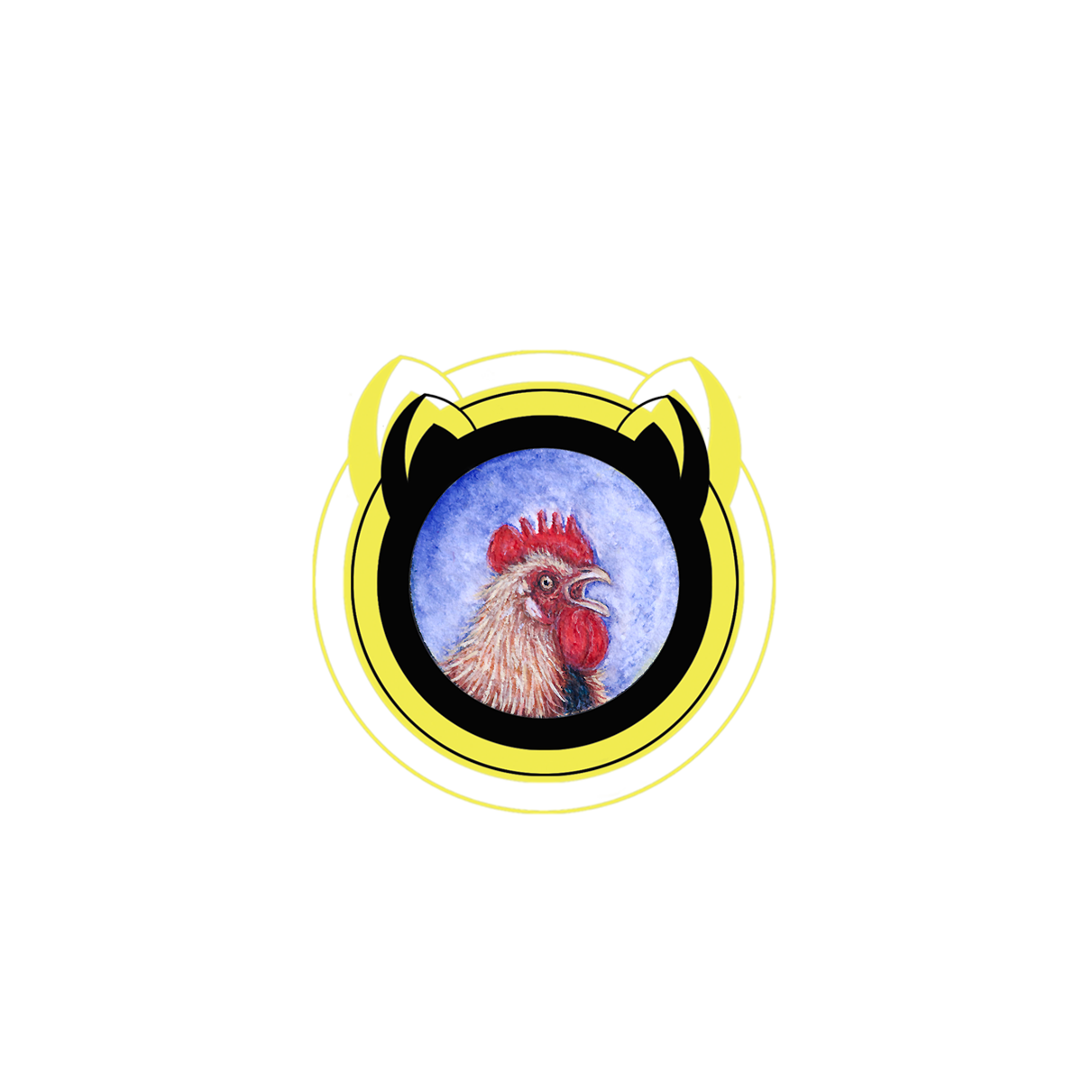Discover the Fascinating World of Chickens!
Are you ready to embark on an exciting journey of discovery? Have you ever considered learning more about those feathered creatures that have graced our lives and plates for centuries? Chickens are more than just a staple in poultry farming. They are fascinating creatures with a rich and complex history. Today, we want to encourage you to dive deeper into the world of chickens and unlock a whole new realm of knowledge and appreciation.
“GALLUS” the rooster from TORC the CAT discoveries on the Farm
Chicken fun facts
Here are some fun and fascinating chicken facts:
Origins: Chickens, scientifically known as Gallus gallus domesticus, are descendants of the red junglefowl, a wild bird native to Southeast Asia.
Terminology:
"Chicken" refers to the entire species, including males and females.
Male chickens are called roosters or cocks, and females are hens.
Baby chickens, regardless of gender, are called chicks.
Rooster Traits:
Roosters are known for their vibrant plumage, prominent combs, and loud crowing.
They play protective roles in chicken flocks, defending their territory and looking after hens.
Hen Traits:
Hens are smaller, have more subdued feathers, and lay eggs to ensure the continuation of their species.
They often cluck softly and are highly attentive mothers.
5. Surprising Speed: Chickens can run up to 9 miles per hour (14.5 kilometers per hour)! Their agility might surprise you in a race.
6. Communication: Chickens have a complex vocal system with specific clucks to express emotions or alert others. For example, hens use a unique cluck to announce they’ve found food, drawing their flock to share the feast.
7. Early Risers: Chickens have a natural internal clock and are diurnal, meaning they wake with dawn and are most active during daylight hours.
8. Global Presence: Chickens are among the most widely farmed and domesticated animals worldwide, playing essential roles in agriculture, cuisine, and culture.
Unleash the Curious Mind: Whether you're a teacher, a parent, or simply an eternal seeker of knowledge, the world of chickens offers a vast array of educational possibilities. From their evolution over thousands of years to their diverse breeds and intriguing behaviors, there is so much to uncover.
Did you know that chickens are the closest living relatives to the Tyrannosaurus rex?
It may sound like something straight out of a science fiction movie, but believe it or not, chickens are believed to be the closest living relatives to the mighty Tyrannosaurus rex. With their feathers, beaks, and scaly legs, these seemingly ordinary birds hold a mysterious evolutionary link to one of the most fearsome dinosaurs that ever roamed the Earth.
Paleontologists have long been puzzled by the relationship between birds and dinosaurs. In recent years, new discoveries and advancements in technology have shed light on this connection and challenged our understanding of avian evolution. Based on fossil evidence, scientists have categorized dinosaurs into two distinct groups: the Saurischia, which includes the theropod dinosaurs like Tyrannosaurus rex, and the Ornithischia, which encompasses dinosaurs like the Triceratops and Stegosaurus.
While the Tyrannosaurus rex belongs to the theropod group, the same group that gave rise to modern-day birds, it is not the direct ancestor of chickens. Instead, both chickens and T. rex share a common ancestor that lived over 70 million years ago, during the late Cretaceous period.
It is believed that after the mass extinction event wiped out a significant number of dinosaur species, the small feathered dinosaurs that survived gradually evolved into birds. Over millions of years, these early birds went through various physical and behavioral adaptations, eventually leading to the diverse bird species we see today. The intriguing link between chickens and T. rex is exposed when studying the genetic makeup of modern birds. Remarkably, chickens and other birds possess specific genetic traits that are remarkably similar to those found in dinosaurs. Elements in modern bird DNA are reminiscent of their extinct relatives, including genes responsible for bone development, taste receptors, and even the ability to produce eggs.
Although chickens have undergone significant changes since their dinosaur ancestors, some dinosaur-like characteristics remain. For instance, embryological studies reveal that chickens and dinosaurs share similar skull architectures during early developmental stages. This fascinating observation suggests that hidden clues to the dinosaur lineage may still be locked within the genetic code of modern birds.
This evolutionary connection between chickens and Tyrannosaurus rex offers a compelling example of the intricate and complex web of life on Earth. It demonstrates how species can diversify and adapt over millions of years yet retain vestiges of their ancient relatives.
While it may take time and further scientific exploration to fully understand this link, one thing is certain: next time you spot a chicken roaming around a farmyard, you might want to take a moment to appreciate the extraordinary journey that led them to become the closest living relatives of the mighty T. rex.
Expand Your Understanding of Nature
Connect with Agriculture: In an increasingly urbanized world, it can be challenging to connect with our agricultural roots. However, learning about chickens allows us to bridge that gap. Exploring the intricacies of chicken farming, understanding the challenges faced by farmers, and supporting local agriculture can help foster a deeper appreciation for the food we consume daily.
Sustainable Living: As we become more conscious of our impact on the environment, understanding sustainable practices is crucial. Chickens play a significant role in sustainable living, from their ability to convert kitchen scraps into nutrient-rich compost to their contributions in natural pest control. Learning about raising backyard chickens can enable you to take steps towards a more eco-friendly lifestyle.
Promote Animal Welfare: Chickens are intelligent and social creatures, deserving of our compassion. By expanding our knowledge about their needs, behaviors, and welfare, we can become advocates for improving their living conditions both in commercial operations and backyard settings. Empower yourself to make informed choices supporting animal welfare by learning more about these amazing creatures.
Did you know chickens have a talent for music, at least in their own unique way? Each chicken has a distinct vocalization known as a "crowing" that is often associated with announcing their presence or a territorial claim. Though commonly associated with roosters, some hens can also crow, though their crow is usually softer and less frequent.
Contrary to popular belief, chickens are quite intelligent. In fact, studies have shown that they possess remarkable problem-solving skills and have the ability to recognize and remember faces of other chickens, humans, and even other animals within their social groups. They are also known to display empathy and can form close bonds with their flock mates.
Chickens come in a dazzling array of feather colors and patterns. From solid black to vibrant reds, speckled or striped plumage, and even iridescent metallic tones, chickens showcase an extensive range of fashion choices in the bird world.
Hens are a symbol of productivity, motherhood, and solidarity in the animal kingdom.
Unlimited Educational Opportunities: From biology and zoology to history and agriculture, chickens can be a captivating focal point for research, discussions, and hands-on experiences. Explore the potential of interdisciplinary learning and ignite a passion for discovery.
So, are you ready to spread your wings and delve into the captivating world of chickens? Join us in embracing the wonders of these feathered creatures and unlock a world of knowledge, sustainable living, and animal welfare advocacy. Whether you choose to get up close and personal with your own backyard flock or delve into books, documentaries, or online resources, learning about chickens is an enriching experience that will continue to surprise and engage you.
Making a Difference, One Book at a Time! #SMILESwithTORC
Remember, knowledge is a gateway to understanding, and understanding breeds appreciation. Let us embark on this exciting journey together and celebrate the unassuming yet extraordinary chickens that share our world.
Begin Your Journey of Discovery!
Let the Wonders of Farm Animals Enrich your Life!
In the digital age, online communities and educational websites dedicated to the wonders of farm life offer a plethora of resources.
So, dear nature enthusiast, let your curiosity guide you to the captivating world of farm animals. Discover their remarkable skills, admire their beautiful adaptations, and recognize their importance in maintaining our delicate ecosystem. By embarking on this journey, you contribute not only to your own understanding but also to the preservation of these extraordinary creatures. Open your mind, and let the wonders of our planet enrich your life!
Spread the Knowledge
Share your newfound knowledge with others, inspiring them to embark on their own journey of discovery. Remember, knowledge is a gateway to understanding, and understanding breeds appreciation.
#SMILESwithTORC
〰️
Empowering communities since 2018
〰️
#SMILESwithTORC 〰️ Empowering communities since 2018 〰️
As November 2023, TORC visited 908 Little Free Libraries in 28 States and 1 Canadian Province, donating 2,907 TORC Books. Learn more about TORC’s past donations at: www.torcthecat.com/smileswithtorc




























